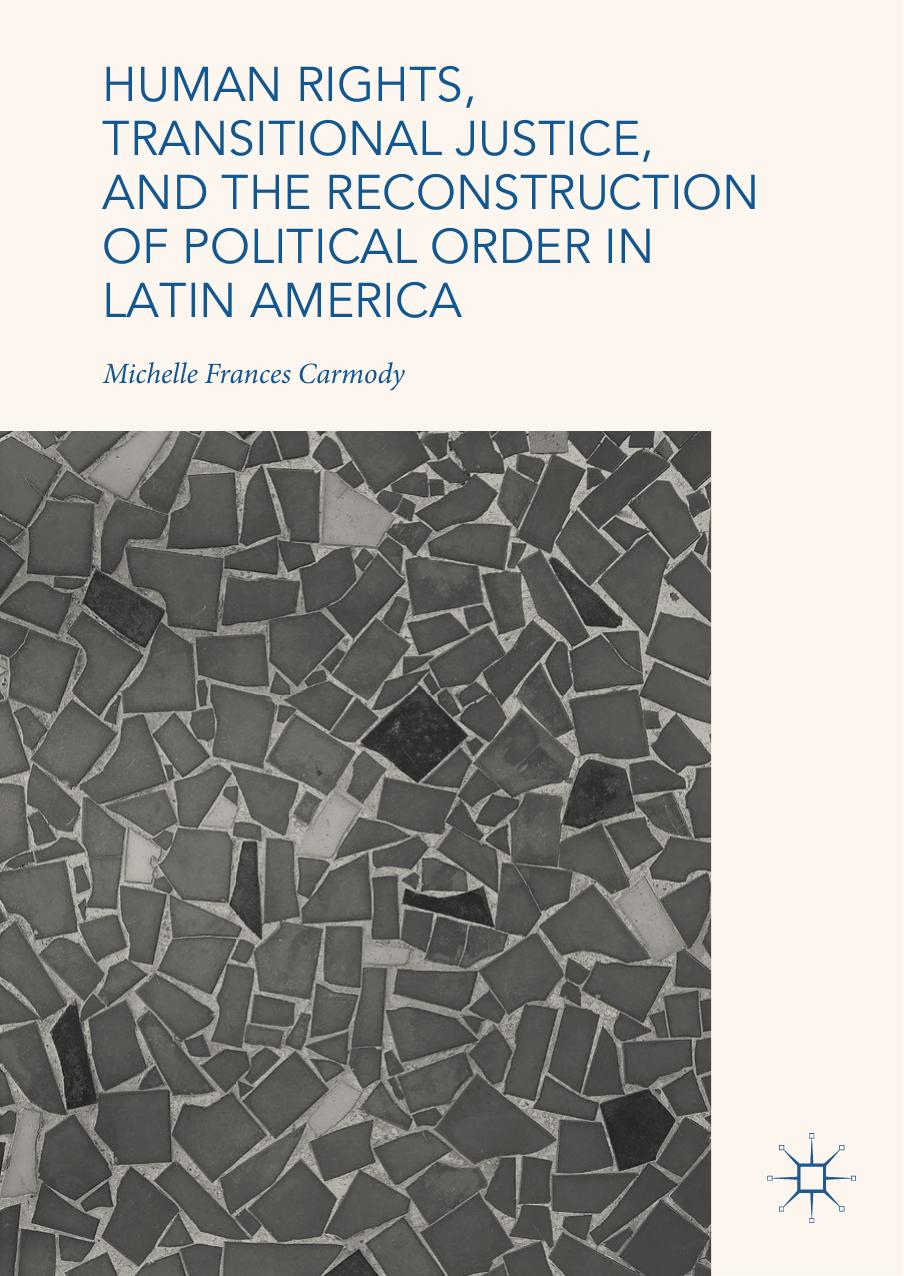Human Rights, Transitional Justice, and the Reconstruction of Political Order in Latin America by Michelle Frances Carmody

Author:Michelle Frances Carmody
Language: eng
Format: epub, pdf
Publisher: Springer International Publishing, Cham
Administering Reparation, Reclassifying Justice
Another central element of Menem’s reconfigured transitional justice policy was reparations . Reparations were an element in the search for reconciliation . In defending the reparations project in parliament Peronist José Corchuelo Blasco argued that the ‘spirit of the project … [was] the reunion of Argentines, [and] the profound search for a point of connection that will allow us to remain within a framework of liberty and respect, with the full observation of human rights .’36 Following from the indultos , which brought transitional justice back under the control of the state and delegitimized retributive forms of justice , reparations helped institute a new form of justice . While retributive justice focused on the perpetrators, reparations explicitly focused on the victim, who was in turn recast as a beneficiary. The redirecting of justice away from retributive forms and into reparative forms also saw the bureaucracy become the site of justice, taking the power to control transitional justice further out of the hands of the judiciary and into the hands of the state. As such, the reparations fed into a broader administrative reform undertaken by Menem that aimed, among other things, at reducing the power of the judiciary vis-à-vis the Executive.37 The reparations excluded the judiciary from transitional justice , while reincorporating human rights activists on new terms.
The idea of reparations as part of transitional justice did not begin with Menem. It had been a consistent element of responses to state-sponsored violations since the beginning of the 1980s, when human rights activists and professionals began to think about dealing with past violations rather than simply focusing on stopping current ones. It was through the work of human rights activists and victims’ groups that the idea for reparations was presented to Menem , who embraced the demand as a timely way to reorient notions of justice following the indultos . The Nunca Más report had recommended that the government offer reparations for the violations it had investigated. Prior to this, reparations had also been mentioned in the recommendations of the Inter-American Commission report in 1980. Like other early demands for justice , however, these recommendations did not specify what was meant by reparation, and to whom they applied. In 1984 the Alfonsín government had first offered reparation in the form of restitutive measures with a series of laws that reinstated members of the public service who had been retrenched during the Proceso.38 Financial reparations entered public policy in 1986 when he sanctioned a law that established a pension for partners and children of disappeared persons, administered through the existing social services infrastructure.39 Following the Juicio, dictatorship-era human rights groups also began to talk about the possibility of demanding more extensive reparations alongside truth and justice, but the issue was extremely divisive within and between the different groups; the Madres de Plaza de Mayo split into two different organizations over the issue in 1986.40 Despite these divisions, a number of Argentine activists did actively pursue financial reparation, using regional-level human rights structures to push the state to respond to their demands.
Download
Human Rights, Transitional Justice, and the Reconstruction of Political Order in Latin America by Michelle Frances Carmody.pdf
This site does not store any files on its server. We only index and link to content provided by other sites. Please contact the content providers to delete copyright contents if any and email us, we'll remove relevant links or contents immediately.
| Arms Control | Diplomacy |
| Security | Trades & Tariffs |
| Treaties | African |
| Asian | Australian & Oceanian |
| Canadian | Caribbean & Latin American |
| European | Middle Eastern |
| Russian & Former Soviet Union |
The Secret History by Donna Tartt(18803)
The Social Justice Warrior Handbook by Lisa De Pasquale(12125)
Thirteen Reasons Why by Jay Asher(8765)
This Is How You Lose Her by Junot Diaz(6758)
Weapons of Math Destruction by Cathy O'Neil(6116)
Zero to One by Peter Thiel(5657)
Beartown by Fredrik Backman(5574)
The Myth of the Strong Leader by Archie Brown(5400)
The Fire Next Time by James Baldwin(5221)
How Democracies Die by Steven Levitsky & Daniel Ziblatt(5110)
Promise Me, Dad by Joe Biden(5074)
Stone's Rules by Roger Stone(5011)
100 Deadly Skills by Clint Emerson(4821)
A Higher Loyalty: Truth, Lies, and Leadership by James Comey(4820)
Rise and Kill First by Ronen Bergman(4680)
Secrecy World by Jake Bernstein(4616)
The David Icke Guide to the Global Conspiracy (and how to end it) by David Icke(4602)
The Farm by Tom Rob Smith(4419)
The Doomsday Machine by Daniel Ellsberg(4395)
